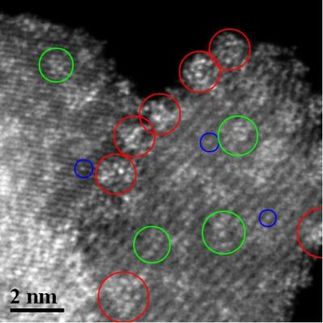Tapping a valuable resource or invading the environment?
Research examines the start of fracking in Ohio
Advertisement
A new study is examining methane and other components in groundwater wells, in advance of drilling for shale gas that’s expected over the next several years in an Ohio region.
The team of UC researchers spent a year doing periodic testing of groundwater wells in Carroll County, Ohio, a section of Ohio that sits along the shale-rich Pennsylvania-West Virginia borders. The study analyzed 25 groundwater wells at varying distances from proposed fracking sites in the rural, Appalachian, Utica Shale region of Carroll County. Because the region is so rural, the majority of the population relies on groundwater wells for their water supply.
“This is a major area for shale gas drilling in Ohio, and one reason is because shales in the area are thought to have a good amount of liquid fuel as well as natural gas,” says Townsend-Small.
The researchers are currently analyzing samples from groundwater wells over a one-year period, with water samples drawn every three-to-four months.
The samples are being analyzed for concentrations of methane as well as hydrocarbons – a carcinogenic compound – and salt, which is pulled up in the fracking water mixture from the shales, which are actually ancient ocean sediments.
“We’re examining changes over time resulting from fracking, and since this is just beginning in Ohio, we have the opportunity to make some baseline assessments,” says Townsend-Small.
Hydraulic fracturing, or fracking, involves using millions of gallons of water mixed with sand and chemicals to break up organic-rich shale to release natural gas resources. Proponents say fracking promises a future in lower energy prices, cleaner energy and additional jobs amid a frail economy. Opponents raise concerns about the practice leading to increased methane gas levels (known as the greenhouse gas) and other contamination – resulting from spillover of fracking wastewater – of groundwater in shale-rich regions.
Townsend-Small explains that some groundwater wells naturally hold a certain level of methane due to the decomposition of organic matter. It’s not toxic in drinking water, but high levels can result in explosion. The study includes measurements of stable isotopes, which can indicate whether methane is derived from natural organic matter decomposition or from fossil fuels.
Other chemicals in fracking wastewater are toxic and dangerous for drinking water. Future UC research includes measurements of some of these compounds, as fracking progresses in the region.
The U.S. Energy Information Administration reported this summer that natural gas reserve additions in 2011 ranked as the second-largest annual increase since 1977, with hydraulic fracturing adding to increased oil and gas reserves.
The Ohio Department of Natural Resources reports that 882 sites in the state of Ohio have been awarded permits for fracking. In Carroll County, 327 sites have been awarded permits and 236 have been drilled.































































